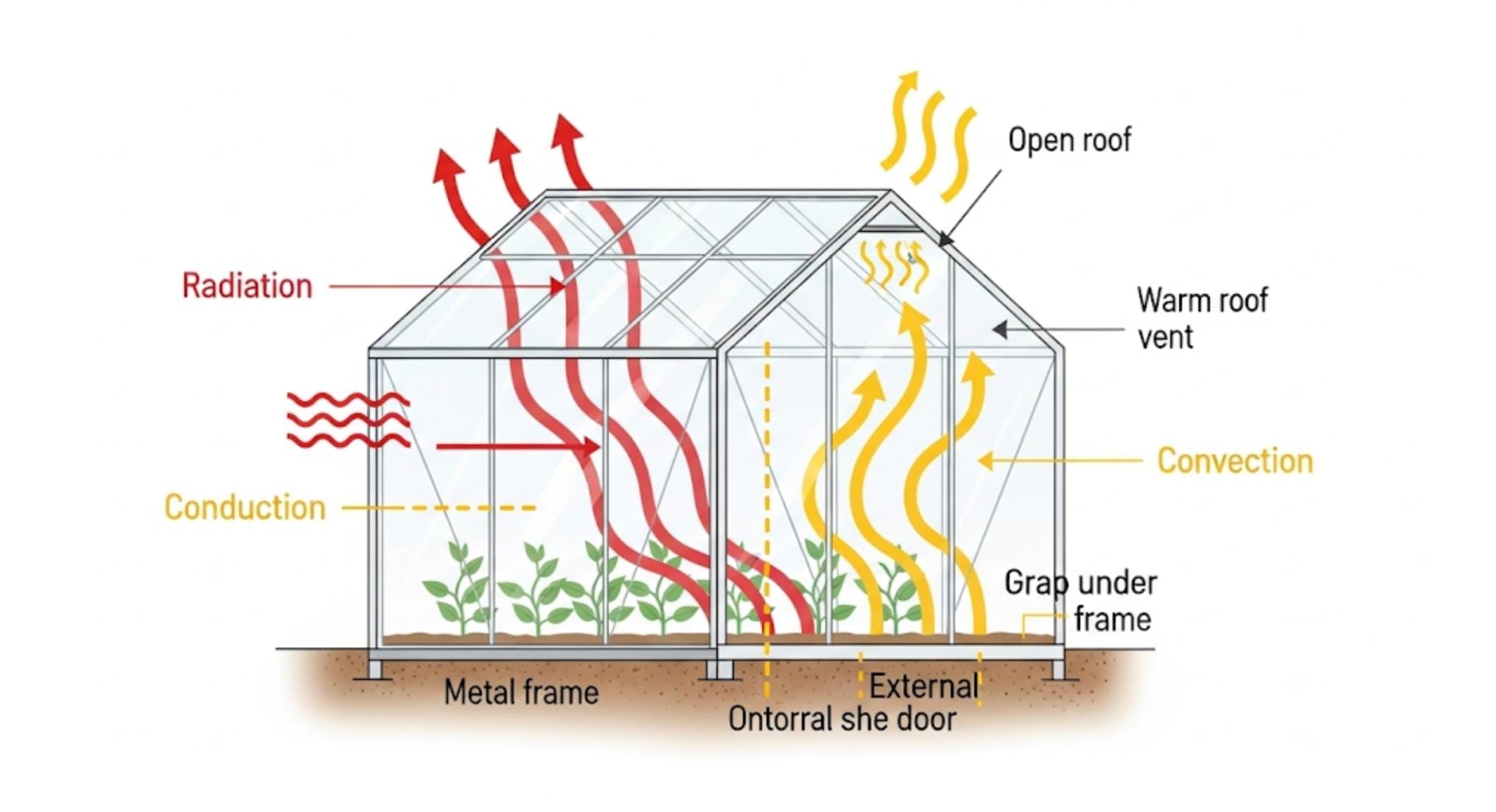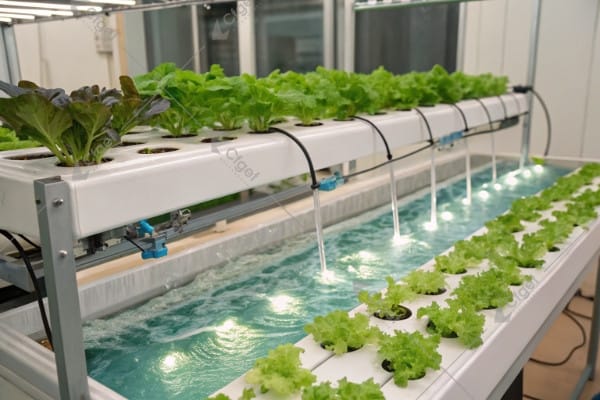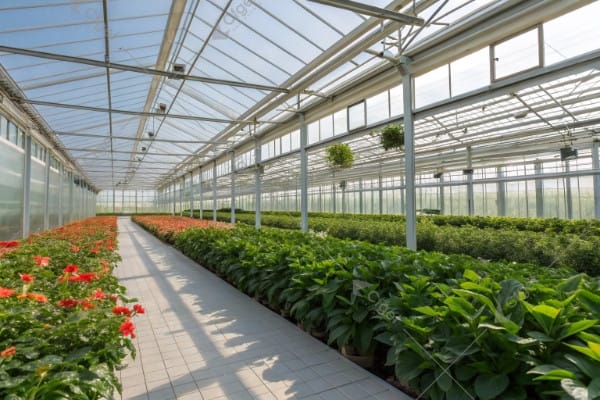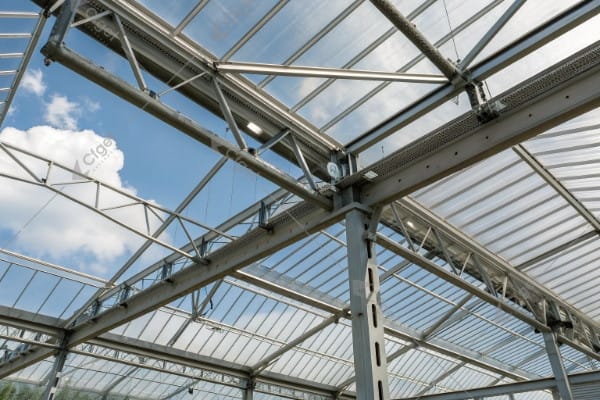Are you overwhelmed by greenhouse options and technical specifications? Many gardeners waste thousands on unsuitable structures that fail to withstand local weather conditions, leading to damaged crops and frustrating repairs.
Polycarbonate greenhouses offer exceptional insulation and durability for cold regions and areas with extreme weather. They provide excellent hail resistance, thermal efficiency, and versatility, though their light transmission decreases over time. Understanding your specific growing conditions is crucial before investing.
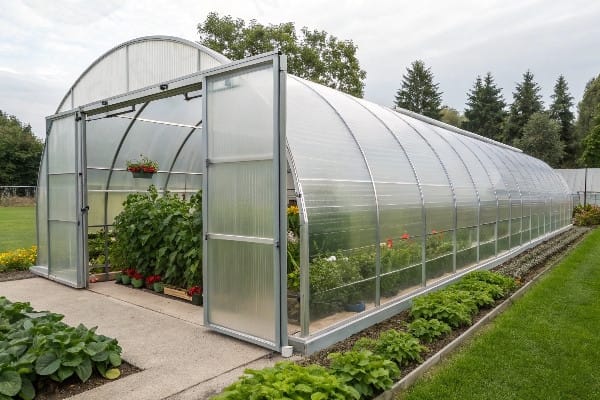
After designing greenhouse systems for almost three decades, I’ve seen countless growers face disappointment when their greenhouse material doesn’t match their growing environment. The right choice between glass, polycarbonate, or plastic film can make the difference between thriving plants and constant struggles. This guide will help you understand if polycarbonate is the right investment for your specific situation and how to maximize its benefits while avoiding common pitfalls.
Don’t Miss:——Winter Greenhouse Heating Strategies: Keeping Your Plants Warm Efficiently?
You might like:——Why Glass Remains a Premier Choice for Greenhouse Glazing?
Decoding Polycarbonate: Types, Thickness, and UV Protection Explained?
Are you confused by the technical jargon around polycarbonate panels? Many buyers get lost in the specifications and end up with material that deteriorates quickly or doesn’t provide the expected benefits for their growing needs.
Polycarbonate greenhouse panels come in three main forms: twin-wall, triple-wall, and corrugated. Thickness ranges from 4mm to 16mm, with thicker panels providing better insulation but less light transmission. UV protection is essential as unprotected panels yellow quickly and degrade within 2-3 years.
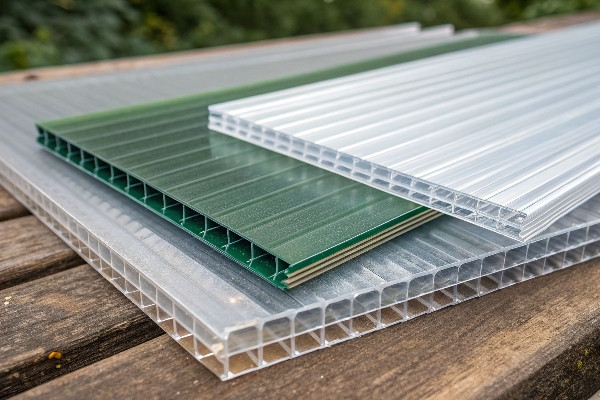
Understanding polycarbonate options is like learning a new language, but making informed choices here will determine your greenhouse performance for years to come. Throughout my career designing commercial greenhouses across diverse climates, I’ve learned that the right polycarbonate specification makes all the difference.
The most fundamental choice is between structure types. Twin-wall polycarbonate features two layers connected by internal ribs, creating insulating air pockets. This design typically offers the best balance of light transmission and insulation for most growers. During a project in northern Europe, we found that twin-wall 8mm panels reduced heating costs by approximately 30% compared to single-layer materials while still maintaining about 80% light transmission. Triple-wall and multi-wall options add additional layers and air chambers, further increasing insulation but decreasing light transmission. For extreme climates like parts of Canada or Northern China, this trade-off often makes sense. The structure choice should match your primary concern – heat retention or maximum light.
Thickness is another critical specification. Commercial polycarbonate panels range from 4mm to 16mm, with increasing thickness providing better insulation values but reduced light transmission. From my experience helping growers in various regions, 6mm twin-wall panels serve as a good starting point for moderate climates, while colder regions benefit from 8-10mm panels. I visited a commercial operation in Sweden using 10mm triple-wall panels that maintained excellent growing temperatures even when outside temperatures dropped below -25°C, with heating costs approximately 40% lower than comparable glass structures.
UV protection remains one of the most misunderstood aspects of polycarbonate selection. Unprotected polycarbonate deteriorates rapidly under sun exposure, becoming brittle and yellow within 2-3 years. Quality panels feature co-extruded UV protection layers (not just UV coatings) that integrate protective compounds throughout the surface material. When inspecting panels, look for terms like "co-extruded UV protection" rather than simply "UV treated" or "UV coated." The difference became starkly clear when I consulted for a grower who had installed lower-cost panels without proper UV protection. Within just 18 months, light transmission had decreased by over 25%, and the panels showed visible yellowing and brittleness.
The R-value (insulation rating) varies significantly across polycarbonate options. A standard 8mm twin-wall panel typically offers an R-value around 1.6, while a 16mm triple-wall panel can reach 2.5 or higher. For comparison, single-pane glass offers approximately 0.9. This insulation capability makes polycarbonate particularly valuable in colder regions. During one commercial project in a mountain region with cold nights, we calculated that the enhanced insulation saved approximately $1.75 per square foot in annual heating costs compared to alternative coverings.
Color and specialty treatments represent another consideration. While clear panels maximize light transmission, diffused panels scatter light more evenly throughout the greenhouse, reducing "hot spots" and plant burn. Some specialty panels also offer selective light transmission, blocking specific wavelengths to influence plant growth patterns or reduce summer heat gain. In a commercial tomato operation, we found that diffused panels reduced fruit cracking by 18% due to more even light distribution, even though total light transmission was slightly lower than with clear panels.
Maximizing Light & Growth: Does Polycarbonate Affect Photosynthesis?
Is light reduction undermining your growing success? Many greenhouse owners don’t realize their covering material might be limiting plant growth and development, especially as their structure ages and clarity diminishes.
Polycarbonate panels transmit 80-90% of available light when new, compared to 90%+ for glass. This slight reduction primarily affects light-intensive crops and winter growing. The impact increases over time as panels age, potentially reducing transmission to 70-75% after 10+ years without proper maintenance.
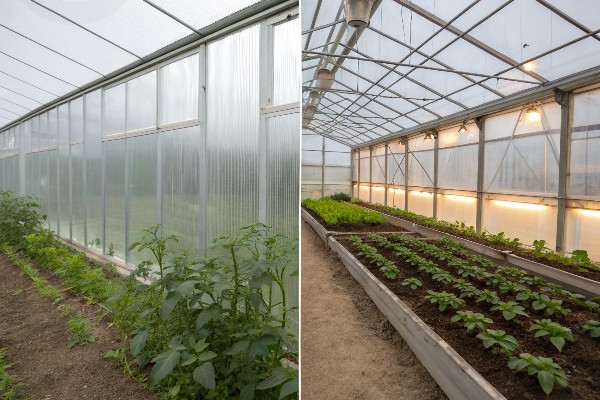
The relationship between greenhouse covering materials and plant photosynthesis is complex and often misunderstood. Having monitored crop performance in hundreds of greenhouses across different climates, I’ve observed both subtle and significant effects that polycarbonate has on plant development.
New polycarbonate panels typically transmit 80-90% of available light, with specific percentages varying by thickness, structure, and manufacturer. This represents a modest reduction compared to glass (90-95%), but a significant improvement over many film materials. The question becomes: does this difference matter for your specific crops? In controlled trials at a research facility I collaborated with, we found that light-intensive fruiting crops like tomatoes and peppers showed approximately 5-7% lower early-season yields under new polycarbonate versus glass. For leafy greens and many ornamentals, however, the difference was negligible or undetectable.
The light spectrum transmitted through polycarbonate differs slightly from natural sunlight or glass transmission. Standard polycarbonate reduces some UV transmission, which can actually benefit certain crops by reducing stress, but may affect development in others. During a comparative growing project with basil varieties, we noted that plants under polycarbonate developed slightly larger leaves but with somewhat reduced essential oil concentration compared to those under glass. This subtle difference wouldn’t matter for most home growers but became significant for a commercial operation producing culinary herbs.
Light diffusion represents one area where quality polycarbonate can outperform glass. Many modern polycarbonate panels are engineered to scatter light more evenly throughout the growing space, reducing shadows and providing more uniform growth. In a rose-growing operation I consulted for, the switch to diffused polycarbonate panels resulted in more consistent stem length and flower quality across the entire greenhouse, even though total light transmission was slightly lower than their previous covering. The diffusion effect created what the head grower called "shadowless growing" that particularly benefited middle and lower portions of the plants.
The change in light transmission over time represents the most significant consideration for long-term planning. While glass maintains its clarity for decades, polycarbonate gradually becomes less transparent. In a 15-year-old commercial greenhouse I assessed in Japan, light meter readings showed transmission had decreased from the original 85% to approximately 73%, despite reasonable maintenance practices. This gradual reduction often happens so slowly that growers don’t notice until it significantly impacts plant performance. During winter months in northern locations, this reduction can become particularly problematic when every photon counts.
Light quality also changes as polycarbonate ages. The yellowing that sometimes occurs doesn’t just reduce total transmission but shifts the spectrum of light reaching your plants. This can affect flowering, fruiting, and overall plant metabolism. In one dramatic case study, a commercial flower grower I worked with traced inconsistent blooming times directly to sections of their greenhouse with older polycarbonate that had yellowed unevenly. When replaced, bloom time predictability improved immediately, highlighting how subtle light quality changes can have meaningful impacts on production.
Temperature management interacts closely with light transmission. While polycarbonate’s insulation properties benefit cold-weather growing, they can create challenges during hot periods. The reduced heat loss that helps in winter can work against you in summer, potentially requiring additional ventilation or cooling systems. I’ve recommended partial shade systems to many clients with polycarbonate greenhouses in warmer regions to manage this balance, effectively trading some light transmission for better temperature control during peak heat.
Installation & Maintenance: Keeping Your Polycarbonate Greenhouse Pristine?
Have you struggled with leaking panels, condensation drips, or structural issues? Poor installation and maintenance practices cause most polycarbonate greenhouse failures, leading to damaged crops, increased heating costs, and premature replacement expenses.
Proper polycarbonate installation requires specific techniques including correct orientation (UV side out), appropriate expansion gaps (3-5mm per meter), compatible sealants, and proper fastening systems. Regular maintenance including cleaning with mild soap, checking seals, and clearing drainage channels extends panel life by 5+ years.
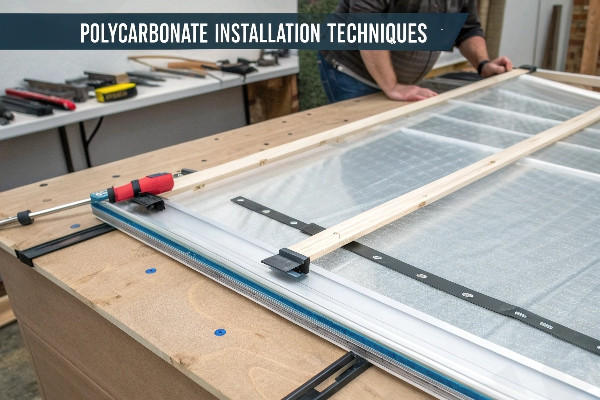
The difference between a polycarbonate greenhouse that lasts 5 years versus 20 years often comes down to installation and maintenance practices rather than material quality. Through my decades working with commercial growers, I’ve compiled essential practices that significantly extend greenhouse life and performance.
Installation begins with correct panel orientation. Polycarbonate sheets have a UV-protected side that must face outward (toward the sun). This protected side usually comes with a labeled film or marking, but once removed, the sides appear identical. I’ve seen devastating failures when panels were installed backwards, leading to rapid degradation within 2-3 years. During a greenhouse renovation in Thailand, I discovered nearly 40% of the panels had been incorrectly oriented during initial construction, explaining the premature yellowing and brittleness the owner had been battling. Always double-check orientation before fastening each panel.
Expansion and contraction accommodations are critical yet frequently overlooked. Polycarbonate expands and contracts significantly with temperature changes – approximately 3-5mm per meter of material. Without proper allowance for this movement, panels buckle, crack at fastening points, or pull away from framing. The correct installation provides expansion gaps at all edges and uses fastening systems that allow for movement. H-profiles, U-profiles, and specialized polycarbonate connectors are designed specifically to allow this thermal movement while maintaining water tightness. During a project in an area with extreme temperature variations, we implemented a floating fastener system that allowed for up to 7mm movement per meter, eliminating the panel failures the client had previously experienced.
Water management determines the long-term success of any polycarbonate installation. Panels must be installed with the channels running vertically to allow condensation drainage. Horizontal installation traps moisture, leading to algae growth and reduced light transmission. Proper endcaps prevent insect and water infiltration while allowing condensation to escape. Vented tape at the bottom and solid tape at the top creates the ideal balance of moisture management and protection. I helped redesign a commercial operation in Japan where horizontal panel installation had created massive algae problems inside the channels – simply reorienting the panels and implementing proper end treatments increased light transmission by nearly 20%.
Fastening techniques significantly impact panel longevity1. Over-tightened fasteners create stress points that lead to cracking, while under-tightened connections allow movement and leaks. Specialized fasteners with rubber washers and appropriate pressure distribution fixtures help achieve the right balance. During my consultation with a large commercial operation experiencing panel failures, we discovered their maintenance team had been overtightening replacement panels, creating radial stress cracks that eventually spread across entire sheets. Implementing torque-specific installation protocols eliminated the problem entirely.
Regular cleaning maintains light transmission and extends panel life. The correct approach uses only mild soap solutions, soft cloths or brushes, and thorough rinsing. Harsh chemicals, abrasive tools, or pressure washers can damage the UV protective layer. One commercial grower I worked with implemented a quarterly cleaning protocol using a custom-built brush system with soft bristles, increasing annual light transmission by an average of 8% compared to their previous sporadic cleaning approach. The modest labor investment yielded significant production improvements, particularly during winter months.
Structural inspection should become routine for any polycarbonate greenhouse owner. Check seals, fasteners, and frame connections at least twice yearly, ideally before extreme weather seasons. Look for early signs of panel degradation, particularly at edges and fastening points. Address small issues before they develop into major problems requiring panel replacement. A commercial pepper grower I advised implemented a systematic inspection program that reduced emergency repairs by nearly 70% and extended their overall panel lifespan from an estimated 12 years to over 18 years.
Avoiding Common Pitfalls: Condensation, Expansion, and Cleaning Tips?
Are you facing persistent dripping, panel buckling, or cloudy polycarbonate that just won’t come clean? These common issues plague many greenhouse owners, reducing growing effectiveness and causing unnecessary frustration throughout the growing season.
Controlling condensation requires proper air circulation, sufficient heating, and appropriate panel installation with correct drainage channels. Expansion issues are prevented through floating fastener systems and appropriate gap allowances. Cleaning should avoid harsh chemicals and abrasives that damage UV protection.
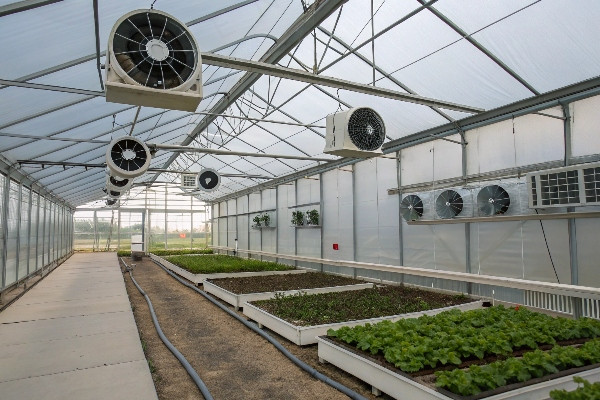
Over my years designing and troubleshooting greenhouse systems, I’ve encountered the same problems repeatedly. The good news? These common issues have well-established solutions that can transform your growing experience when properly implemented.
Condensation management represents perhaps the single biggest operational challenge for polycarbonate greenhouse owners. The insulation properties that make polycarbonate excellent for heat retention also make it prone to condensation formation when warm, moist greenhouse air contacts cooler surfaces. This condensation can drip onto plants, creating perfect conditions for fungal diseases. The solution involves a systematic approach to air management. During a commercial project in a high-humidity region, we implemented a three-part strategy that reduced condensation dripping by over 90%: first, installing horizontal air circulation fans to keep air moving across panel surfaces; second, maintaining a minimum temperature differential between inside and outside to reduce dew point conditions; and third, implementing proper panel installation with channels oriented for drainage. The combination transformed a previously problematic environment into a productive growing space.
Algae and mold growth inside panel channels occurs when moisture infiltrates and remains trapped. Once established, these organisms reduce light transmission and create unattractive green or black streaks. Prevention starts with proper end closures – breathable at the bottom (allowing moisture escape) and sealed at the top (preventing water entry). For panels already affected, we’ve had success with hydrogen peroxide solutions carefully introduced into the channels, followed by thorough flushing and improved ventilation. A garden center I consulted for had nearly 30% light reduction from algae-filled channels. After treatment and implementing preventative measures, their light readings improved dramatically, and plant quality visibly enhanced within weeks.
Thermal expansion issues create some of the most frustrating and potentially destructive problems in polycarbonate greenhouses. When panels buckle, pop out of their framing, or develop stress cracks, the cause is almost always inadequate expansion allowance. During a particularly hot summer, I visited a commercial operation where panels were literally pushing themselves out of their frames. The retrofit solution involved modifying all fastening points to create floating connections using oversized holes and specialized washers, then ensuring 3-5mm expansion gaps at all panel edges. This seemingly simple adjustment completely resolved their ongoing battle with panel failures and water leaks.
Cleaning mistakes frequently accelerate polycarbonate degradation. Harsh cleaning chemicals, particularly those containing ammonia or abrasives, damage the critical UV protective layer. Similarly, pressure washers can strip this protection and create micro-abrasions that accelerate degradation and reduce clarity. The correct approach uses only approved polycarbonate cleaners or mild soap solutions applied with soft cloths or brushes. One memorable consultation involved a greenhouse where the owner had used an ammonia-based window cleaner, inadvertently damaging the UV protection across large sections. The panels began degrading rapidly and required premature replacement – an expensive lesson in proper maintenance.
Snow load management becomes crucial in colder climates. While polycarbonate offers good strength, excessive snow accumulation can cause deformation or even collapse. Proper structural design with appropriate pitch and support members provides the first line of defense. For existing structures, carefully removing snow accumulation before it becomes too heavy is essential. I worked with a commercial grower in a heavy snow region to develop a safe snow removal protocol using long-handled foam pushers that effectively cleared panels without risking damage from sharp tools or excessive pressure.
Pest infiltration between panels and frame members creates both aesthetic and functional problems. Insects, particularly wasps and bees, often build nests in these protected spaces, while rodents may chew on seals and fasteners. Proper sealing during installation with appropriate materials (silicone designed for polycarbonate) prevents most issues. For existing problems, careful removal and resealing provides the solution. During a renovation project for a large commercial operation, we discovered extensive wasp nesting throughout their panel connections, requiring complete disassembly, cleaning, and proper resealing with compatible materials – a massive undertaking that could have been prevented with proper initial installation.
Replacement timing often confuses greenhouse owners. Is slight yellowing acceptable? When should panels be replaced? Through my experience, I’ve found that a 15-20% reduction in light transmission typically signals the economic replacement point for commercial operations, while hobby growers might tolerate greater reduction. Light meter readings compared to new panel specifications provide objective measurement. One vegetable producer I worked with implemented a systematic replacement program based on light transmission testing, replacing sections when they fell below 75% of original specifications. This approach optimized their capital expenditure while maintaining productive growing conditions.
Conclusion
Polycarbonate greenhouses offer excellent insulation, durability, and weather resistance for cold or harsh climates. With proper understanding of panel types, installation techniques, and maintenance practices, they provide decades of productive growing with significantly reduced heating costs.
Discover how proper fastening techniques can significantly enhance the longevity of your polycarbonate panels, preventing costly repairs and replacements. ↩

